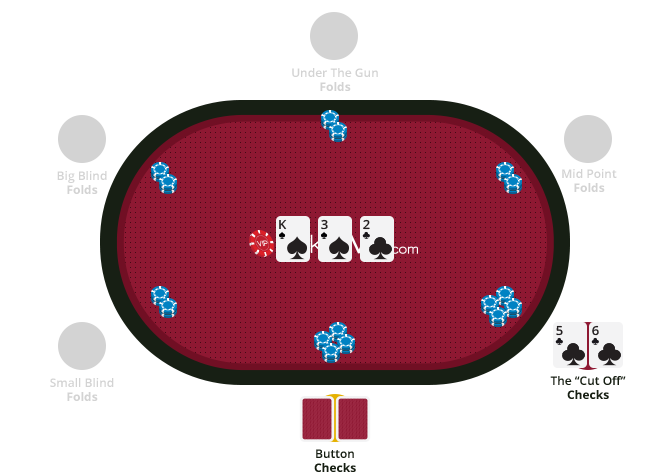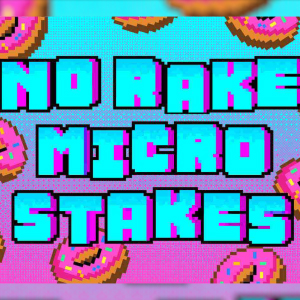Planning your game ahead of time is crucial to your success. This article explains some relevant stats for your postflop planning strategies and how to read these stats in order to make the best use of them
A common ability that is shared by chess

grandmasters is the ability to think many moves ahead. They may spend a decent proportion of their thinking time addressing problems which may not occur for several moves. A chess player who makes plays on a move-by-move basis without thinking ahead is unlikely to become an effective competitor in a tough game.
Poker is arguably more complex than chess yet players are routinely making decisions on a street-by-street basis with no future considerations. This can render our strategy ineffective, just as it would if we were playing chess. The main difference is that the standard of poker is lower in general and players typically get punished less for having holes in their strategy. For this reason, the topic of thinking ahead does not always receive the emphasis that it deserves.
Understanding the Relevance – Fold to Cbet Stats
While knowing the best play in isolation can be useful, it's important to understand that in reality there is no such thing in practice. Our decision on the flop can change dramatically based on our estimations regarding future play.
Let's take our opponents fold-to-cbet
poker stats as an example. It's very common to be taught a static approach initially where we attempt to decipher the best play in isolation. Typically we assign one of the two following strategies –->
- opponents fold-to-cbet stat is HIGH – We should weight our range towards bluffs and consider slowplaying some of our value hands. Extracting thin value will also be tougher if our opponent has a tendency to fold rather than call.
- opponents fold-to-cbet is LOW – We should weight our range towards value and avoid bluffing this opponent. Extracting thin value will also be a much more viable option against this opponent.
This all certainly makes sense on a basic level, but does not really represent the complete picture. Imagine for example that opponent #2 has an extremely high fold-to-turn cbet stat. How do we exploit this? We can certainly check some of our value range as an exploit. But what about bluffing? We actually have no hands that we can use as bluffs since we folded them on the flop after seeing our opponent's high fold-to-flop-cbet stat.
While knowing the best play in isolation can be useful, it's important to understand that in reality there is no such thing in practice. Our decision on the flop can change dramatically based on our estimations regarding future play.
The obvious thing we can do here is to actually bluff the flop with some hands that make sense as a
double-barrel. Of course, we'd never know this unless we first consulted villains fold-to-turn-cbet stats while we were still on the flop. In a similar manner, river stats may also be useful when making a flop decision. Perhaps our opponent rarely folds the flop or turn but frequently gives up his wide range on the river. We may be able to use certain hands as 3barrels that we'd often fold on the flop if we purely consulted our opponents flop tendencies.
What we can learn is that making a decision in isolation based on one individual stat may sometimes lead to the best decision – but can also sometimes blind us to an even stronger line. We are aiming for a broader picture where we consider multiple stats on the current street and multiple stats on later streets. As an example, just because an opponent has a low fold-to-flop-cbet does not always automatically mean that we can bet often for thin value. We may check his flop-raise-vs-cbet stat and see that when he defends he often does so aggressively, making it tough for us to defend marginal holdings.
Understanding the Relevance – Fold to Cbet Stats
We can see similar issues arise if we try and use the fold-to-cbet-stats on a street-by-street basis. Let's consider general strategy for the flop assuming that we were trying to make the best decision in isolation.
- Opponent has a very low Flop cbet – We generally are looking to give our opponent a decent amount of credit here as a result of his low cbetting frequency. We won't generally float this opponent light and will mainly play for value if he cbets.
- Opponent has a very high Flop cbet – We are generally looking to not give our opponent credit here if he cbets. We should think about bluff-raising and floating him a decent percentage of the time.
Opponent #2 is potentially

going to be the most problematic here. We may actually make some significant mistakes if we decide to follow the above strategy. Usually we might
float the flop wide vs someone with a high flop cbet with the intention of taking the pot down on a later street, especially if our he checks OOP. But what happens if he has extremely high barrel stats on all 3 streets, can we still profitably float?
If we are relying on our opponent checking so that we can take the pot down we are likely going to end up disappointed. That still leaves us another option of course, bluff-raising vs his barrels. But what happens if our opponent never folds to any raises. Can we still profitably float the flop? It's likely that we can't – at least not floats without the potential of calling down 3 streets. One of the worst things we can likely do is to call 2 streets and end up folding the river. Our opponent takes the most money off us this way. In reality we need to adjust our flop decision as a result of our opponents tendencies on later streets.
If we are relying on our opponent checking so that we can take the pot down we are likely going to end up disappointed.
So while generally it's true that we can float wider vs an opponent who cbets very aggressively, it's only the case if his aggression lowers on later streets and he shows a tendency to give up. If our opponent is dis-inclined to fold and will also continue his aggression on later streets – it may actually be correct to float the flop tighter than we would normally.
We should be able to see that is is possible to make vastly different decisions on the flop based on our opponents' future tendencies. We could say that it is not really possible for us to make the best flop decision on a regular basis if we don't consider the future possibilities.
Opponent Profiles
While every situation is different its useful to consider a few of the more common player profiles so that we learn in advance how to exploit the situation. Without delving into specific
poker maths, see if you can decide for yourself how you would exploit the following player profiles.
#1 High fold-to-flop-cbet, Low fold-to-turn-cbet
Let's imagine we are OOP on the flop and we want to think about the best possible lines to take with certain hands as the aggressor.
Firstly what type of opponent do you think this is? What would you say is his gameplan?
We can likely refer to this type of player as a fit-or-fold player. He has a high fold-to-flop-cbet because he generally gives up on the flop if he doesn't connect well. However since he continues past the flop with a pretty strong range on average, it is not surprising to see that he doesn't fold the turn very much when facing a second barrel.
In helping us to formulate a strategy across multiple streets, it can often be useful to ask the question:
What is the worst possible line I could take? How could I lose the most money to this opponent?
Generally when we know the line that we are ultimately trying to avoid, we also will have a reasonable idea on what type of lines will be profitable. There are likely 2 main mistakes we can make against such an opponent.
We know that he folds way too much to cbets, so not
cbetting as a bluffwill be a leak, since we can easily win pots this way. We can also see that barreling the turn as a bluff could be a significant error, since by the time he gets past the flop he will generally be noticeably stronger than average.
Our general strategy on the flop should involve:
- Cbetting our air with an extremely high frequency
- Considering a slowplay of some of our value-range
- Checking our thin value-hands (it's much harder to extract value from a player who is folding too much)
Our general strategy on the turn should involve:
- Barreling strong hands for value and not bluffing
Players may often make mistakes in such situations by rigidly sticking to a default gameplan. Using good planning techniques to think ahead will allow us to see where unorthodox lines can be much stronger than the standard ones.
For example it's pretty standard

in today's games to automatically barrel the turn when we pick up some type of equity such as a flush draw. But what about the opponent above? Mainly players will blindly stick to their strategy and fire that second barrel as a semi-bluff when the draw is turned. It should be pretty easy to see that it is likely not the best option vs a player who is rarely folding the turn because his range is strong. Remember that it's the fold-equity that makes barreling draws profitable – if we are unlikely to get folds we are simply putting more money into the pot with the 2nd best hand.
#2 low fold to flop-cbet, high fold to turn-cbet
Firstly what type of player would you say this is?
This is frequently a floater. Someone who likes to not fold many flops because they feel they can take the pot down on a later street. As a result the range with which this player reaches the turn is pretty wide and suceptible to bluffs. Assuming we check the turn OOP this player will generally bet in an attempt to pick up the pot.
The number one worst line involves playing into our opponent's strategy, doing exactly what he wants us to do.
What is the worst line we can take against this opponent?
The number one worst line involves playing into our opponent's strategy, doing exactly what he wants us to do. He wants us to cbet the flop light and then give up super frequently on the turn. Our strategy should be geared around avoiding this line. We'd want to consider the following:
- Avoid cbetting the flop with low potential bluffs which will struggle to barrel the turn
- Cbet anything that will make a decent turn barrel on a large amount of turn cards
- Consider slowplaying some of our value hands on the turn to exploit opponent if he bets with a high frequency
- Consider going for a check/raise bluff along with our second barrels. (Check-raising potentially exploits our opponent harder because we cause him to put an extra bet into the pot before folding).
#3 High cbet flop, hight cbet turn, high cbet river
Firstly what sort of player is this?
We have to be somewhat careful when answering this since there is more than once possible answer. It also illustrates the important concept that many stats are pretty meaningless when used in isolation.
This could certainly be a
hyper aggressive maniac who always likes to bluff. However this isn't the only type of player these stats might represent. It could also pretty easily be a nit who only plays big pocket-pairs preflop. It's completely understandable that he'd have high cbet stats postflop because he'll have an overpair a huge percentage of the time when he sees a flop. We'd be making a big mistake if we assumed those high cbet stats meant he was light and that we should be calling down with a wide range.
Naturally our play vs a maniac and vs a nit would be completely different, despite the fact that their postflop cbet stats could potentially be identical.
Let's imagine this player is a maniac and loves to 3-barrel bluff.
What is the worst line we could take against this player?
There are quite a few considerable errors we could make here. If we had to break it down to one bad line that loses us the most money it would be the following -
Call flop, call turn, fold river.
Our strategy will often

be geared around avoiding this line. As discussed earlier in this article we need to think about primarily floating flops which hands that have a reasonable shot at reaching the river. This can easily result in quite a tight floating range. If we looked purely at his high flop-cbet stat, we may decide it's optimal to float with an extremely wide range. This would be pretty suicidal since we will end up being forced to fold by the river a huge percentage of the time.
The exception to this is if we were facing a maniac who is capable of folding to raises. We could consider still floating a wide range on the flop, confident in the knowledge that we can use a reasonable proportion of these floats as bluff-raises on the turn and river. Assuming our opponent does not fold to raises then its very important that we float the flop with a tighter range than average so that we can defend more effectively against our opponents aggressive 2 and 3 barrels.
We could also potentially think about slowplaying some premiums preflop so that our flop range is stronger overall. This would also be dependent to an extent on how our opponent reacts to 3bets. If he actually folds to 3bets a decent chunk of the time this makes the expectation of slowplaying premiums against a maniac considerably higher.
Application to other areas
While we have looked once specific group of stats (cbetting/folding-to-cbets) we should be able to apply this type of thinking to a range of other stats and situations. It's the method of thinking that is more important as opposed to memorising what to do in various situations. Above all, remember on each street to think ahead and visualise some of the possible action and your reaction. In the following article we will apply the concept of thinking ahead to other important situations.
 grandmasters is the ability to think many moves ahead. They may spend a decent proportion of their thinking time addressing problems which may not occur for several moves. A chess player who makes plays on a move-by-move basis without thinking ahead is unlikely to become an effective competitor in a tough game.
grandmasters is the ability to think many moves ahead. They may spend a decent proportion of their thinking time addressing problems which may not occur for several moves. A chess player who makes plays on a move-by-move basis without thinking ahead is unlikely to become an effective competitor in a tough game. going to be the most problematic here. We may actually make some significant mistakes if we decide to follow the above strategy. Usually we might float the flop wide vs someone with a high flop cbet with the intention of taking the pot down on a later street, especially if our he checks OOP. But what happens if he has extremely high barrel stats on all 3 streets, can we still profitably float?
going to be the most problematic here. We may actually make some significant mistakes if we decide to follow the above strategy. Usually we might float the flop wide vs someone with a high flop cbet with the intention of taking the pot down on a later street, especially if our he checks OOP. But what happens if he has extremely high barrel stats on all 3 streets, can we still profitably float? be geared around avoiding this line. As discussed earlier in this article we need to think about primarily floating flops which hands that have a reasonable shot at reaching the river. This can easily result in quite a tight floating range. If we looked purely at his high flop-cbet stat, we may decide it's optimal to float with an extremely wide range. This would be pretty suicidal since we will end up being forced to fold by the river a huge percentage of the time.
be geared around avoiding this line. As discussed earlier in this article we need to think about primarily floating flops which hands that have a reasonable shot at reaching the river. This can easily result in quite a tight floating range. If we looked purely at his high flop-cbet stat, we may decide it's optimal to float with an extremely wide range. This would be pretty suicidal since we will end up being forced to fold by the river a huge percentage of the time.

